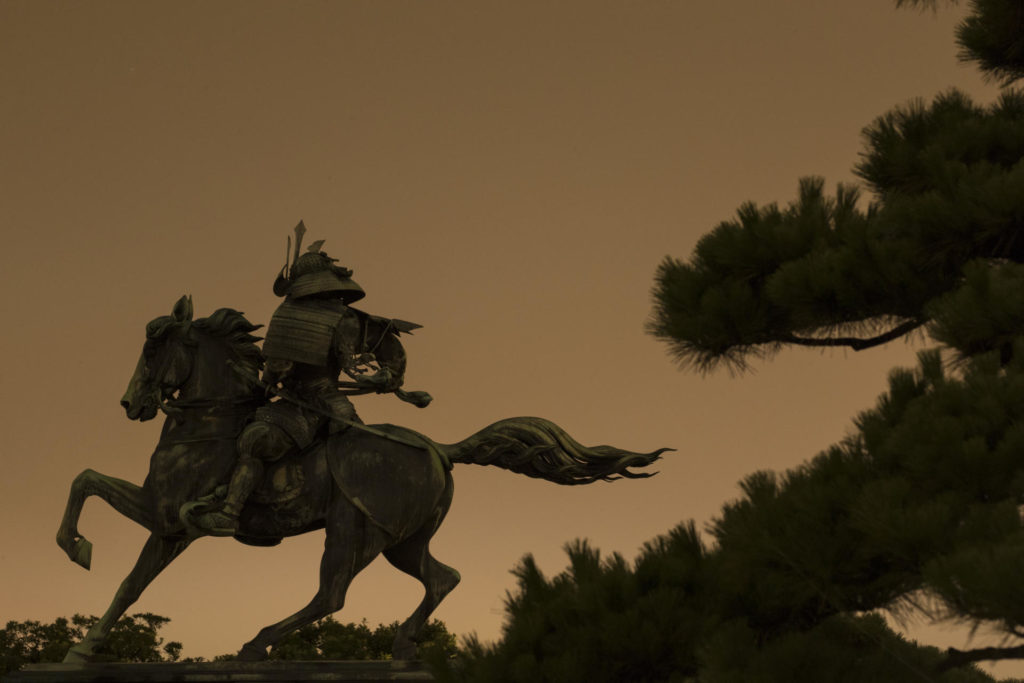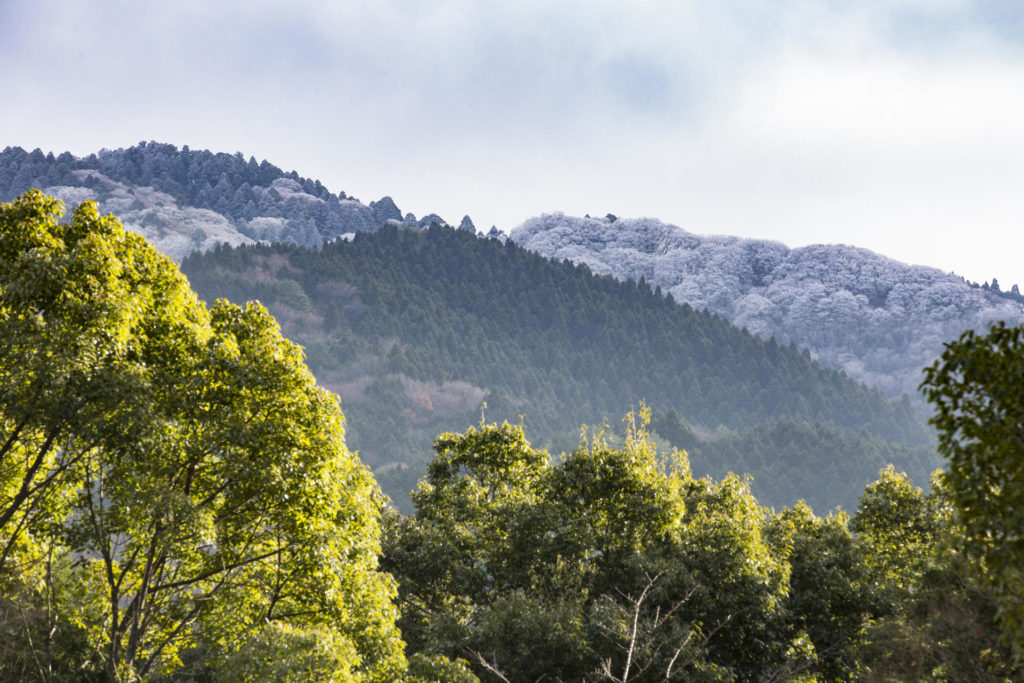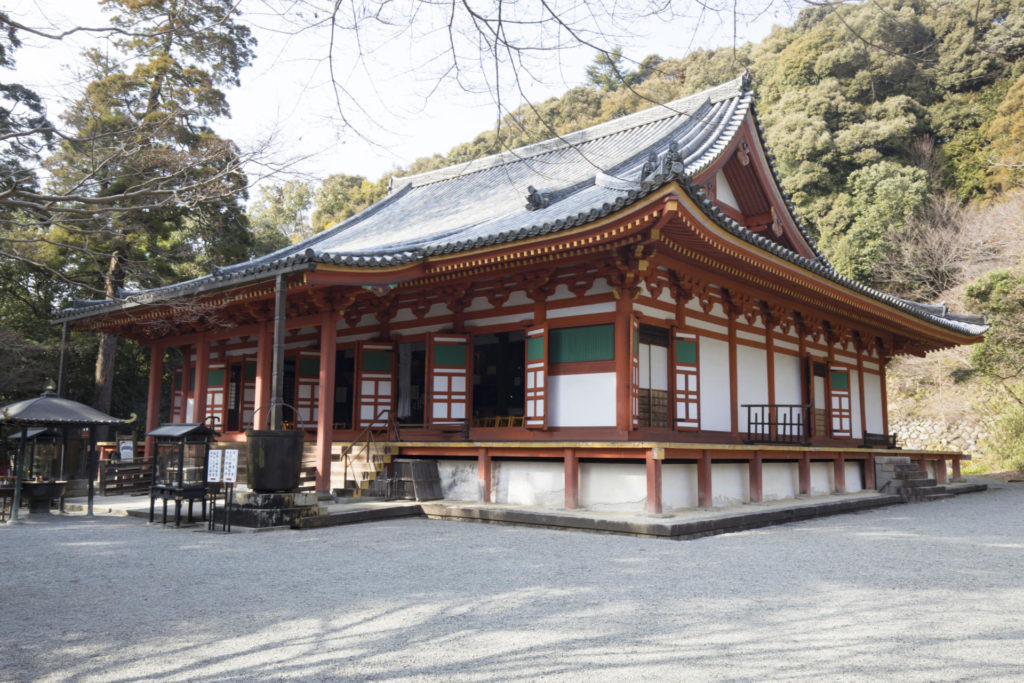A photographer who too often read samurai novels and had trouble distinguishing between reality and the pages in those books. A man who saw himself as the descendant of a legendary samurai and began taking pictures as the “Photo Warrior of the Southern Dynasty.”

He drove a beat-up four-wheel-drive car with Nagano license plates, suddenly emerging in the middle of the night in the Imperial Palace Garden in Tokyo where he would shoot the statue of a legendary samurai. He kept taking photos alone, on rainy and windy days, sometimes suspected by the police, sometimes getting offers for jobs.
This story is about a photographer-warrior who mistakenly saw himself as the descendant of a legendary samurai, and who intended to serve as the recorder of the great urban struggles of the Nanboku-cho Era (1336 to 1392), from the battles of Chihaya and Akasaka (in the 1330s, in Osaka) to the Battle of Minatogawa (1336, in today’s Kobe).
Taiheiki
I’m an outdoor photographer, with a career spanning more than 20 years. I shoot mountaineering, backcountry snowboarding and outdoor sports in general, and I have at times lived in the Mecca for outdoor activities in the US. I always bring my camera and several books to the mountains. This was true when I spent two weeks heading into the remote areas of the Canadian Rockies as well as when I was crossing from Hakuba to Toyama in the depth of winter.
Since I was a child, I enjoyed reading samurai novels, and continued to read them into adulthood. Of these, perhaps my favorite is the classical work “Taiheiki.” The book is a record of the fierce battles among the samurai, of the heroism that all people can empathize with—and above all an illustration of tadayoshi—the traditional samurai values. But those weren’t the only reasons I was drawn to “Taiheiki.” Many mountains appear in the scenes portrayed in the novel. Through these pages written 700 years ago, samurai run through mountains that I climb today. At one point, I thought it would be impossible to express the world of “Taiheiki” in photographs.
Kusunoki Masashige
Most foreign tourists visiting Tokyo will probably visit the Imperial Gardens. Within the Gardens is the statue of a samurai on horseback. Today, however, few people know the name of the samurai. People point at the statue and say it’s the famous warlord Takeda Shingen; less cultivated people say, “Oh, that’s Tom Cruise from ‘Last Samurai.’” The real name of this samurai is Kusunoki Masashige. He is known as the strongest, most notable strategist of the medieval samurai in Japanese history.
It’s hard to quickly explain Kusunoki, also known as “Nanko.” With a force of just 700 soldiers, he faced the army of the Kamakura Shogunate—estimated to be in the tens of thousands—during the siege of Chihaya Castle at Mt. Kongo, and protected it for several months. At the same time, he built up an information network using yamabushi (ascetic mountain priests) while also inciting anti-government guerrilla attacks in many locations, eventually overthrowing the Kamakura Shogunate. Later the new government collapsed due to rebellion, but he remained loyal to Emperor Godaigo even after his loss at the Battle of Minatogawa. This story has long fascinated the Japanese people, and he has become a legend somewhat like King Leonidas of the Greek city-state Sparta, depicted in the movie “300.”
Mount Kongo
Mt. Kongo is the highest peak in Osaka Prefecture and one of the most famous mountains for Japanese people. Shugendo, the religion of the yamabushi, developed here, and even today people climb repeatedly as part of their training. At the top there is a place where they keep track of successful summits, with the most recorded by one person equaling more than 17,000 times. Climbing once a day would mean it would take a person more than 40 years.
Mt. Kongo was the mountain where Kusunoki stood against the tens of thousands of soldiers of the Kamakura Shogunate and survived a siege of many months. Along the side of the trail to the peak is Chihaya Shrine, where Kusunoki and his son are enshrined as symbols of powerful spirits; it seems as though he is still protecting the mountain. Interestingly, straw samurai figures— which Kusunoki is said to have used during the siege—are set along the trail. While climbing the mountain, it may feel as if arrows could suddenly fly by at any moment.

Another shrine and a temple are located on the summit, further telling of the mountain’s role as the home of many myths. One more person we can’t forget when talking about this mountain is En no Gyoja. Combining Buddhism with traditional Japanese mountain beliefs, he can also be called the founder of Japanese mountain culture—Shugendo. He began his practice here on the mountain long before finding enlightenment. It is not just a mountain, but a place with tremendous power.

For those interested in Japanese history and photography, Yuske’s photo exhibition will be held at Kanshiji Temple in Kawachi-Nagano, Osaka from May 20-27.




